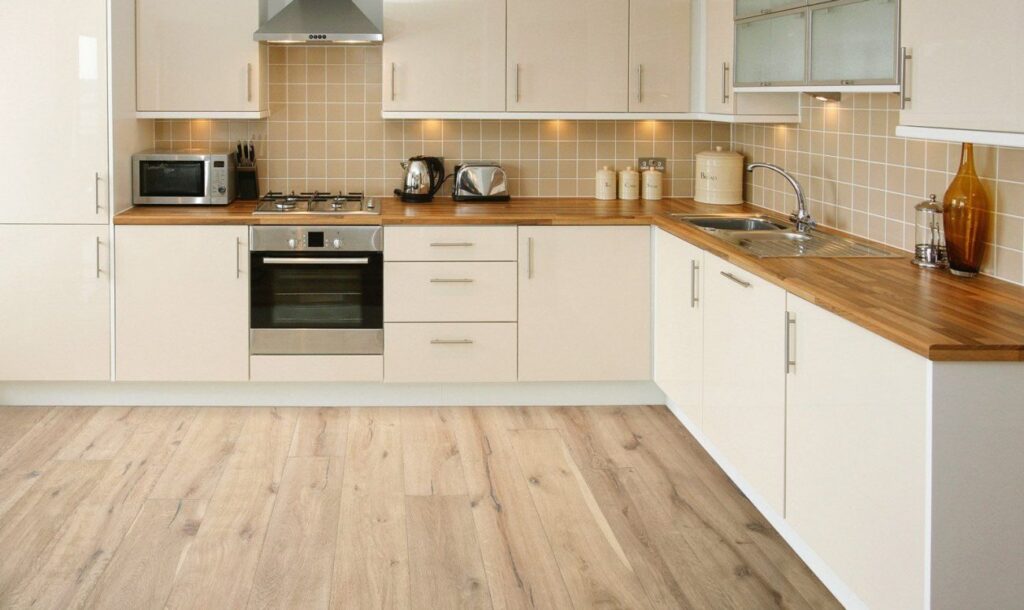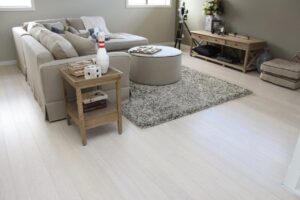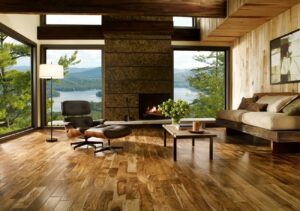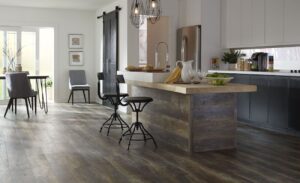Can you imagine how wood floors will transform your home into the most beautiful and cozy space? Just by adding solid and engineered wood flooring into the room, you will definitely have not only the warmest floors to spend time with the family but also the higher resale value and faster selling of home whenever you want it someday.
There are more to know about both solid and engineered wood flooring you may need to know as a good reference. Considering that flooring is also one of the most important home elements in the home interior design, make sure you have much information before you make decision to make it.
Now let’s go to the following review sections to explore more about solid and engineered wood flooring including how they are constructed and where they should be applied on in the home.
We will also describe the characteristic of both solid and engineered wood flooring. This information would be much of advantage when it comes for you to consider the floor’s scratch resistance.
Solid Wood Flooring
In the world of wood flooring, you will find the two basic types that are solid and engineered wood flooring. In this first session, we are going to get to know about the solid wood flooring.
It is best known that solid wood floors have the more solid construction which is ¾ inches thick. It is also constructed with the tongue and grove sides in order to join the boards.
One of the most beneficial features out of solid wood flooring is its capability for being resanded and refinishes, making the floors able to last more than 50 years. In the other word, solid wood flooring as a lifetime lifespan.
Due to its solid wood, solid wood flooring is susceptible to contraction and expansion influenced by the room humidity changes.
To provide a solution over the flooring movement, solid wood flooring must provide 5/8 to ¾ inches of gap in the installation process. This way, you can cover the gap using the shoe molding and the baseboard.
The ¾ inch thick solid wood floors is not recommended for basement which has a below-grade condition.
Instead, if you want to use this solid wood flooring for your basement, you must choose the type with 5/6 inches which is considered thinner, suiting the basements or other home areas with below-grade condition.
There are two types of solid wood flooring produced by the manufacturers. Those are unfinished and prefinished solid wood flooring.
Prefinished solid wood flooring is basically designed with the beveled top edges where the tongue and grove meet to join the boards.
On the other hand, the unfinished solid wood flooring is designed with the sanded, stained and finished on the job site, making it possess smooth seamless joints.
Read Also: DuChateau Solid & Engineered Hardwood Flooring
Engineered Wood Flooring
The next thing we are going to share you dealing with the solid and engineered wood flooring is the engineered wood flooring. Different from the solid wood flooring, the engineered wood flooring comes with the 3 to 10 wood layers when it is constructed.
Each wood layer is called “ply” which is designed with the different strength. This engineered wood flooring uses glue under pressure in the installation process, making it more stable than the solid wood flooring.
This means that engineered wood flooring is not susceptible for expansion just because of the room humidity changes.
If you want to install the solid wood flooring over concrete subfloor, you need to ensure the grade condition and the cleanliness.
However, engineered wood flooring is not that effortful. You can juts apply this engineered wood flooring over the concrete floor directly though the floor might be below-grade application.
However, please pay attention to the tips on installing the engineered wood flooring by doing the vapor transmission testing to know the level of emission or hydrostatic pressure on concrete slab vapor.
Make sure it is acceptable so that there is no installation problem arise because of the excessive moisture.
Greatly, engineered wood flooring is also featuring the tongue and grove. It can also be easily applied on non-floating at which you can use nails or full adhesive spread.
Some manufacturers offers the engineered wood flooring with interlocking floating wood, enabling you to install the flooring without adhesive. Thus, you don’t have to prepare more tools for the installation process.
Wood Floor Hardness
Still much dealing with the solid and engineered wood flooring, now it’s time to talk about the wood floor hardness.
If you are new to wood flooring, you must know that the wood species uses on the wood flooring can be measured through Janka Hardness Rating.
It is a kind of test measuring the force required to expand a steel ball which is usually in .444 inch in diameter to half its diameter in the tested piece of wood.
Janka Hardness Rating system uses pounds of force in a square inch in measuring the rating. The higher number of the ratings, the harder the wood meant.
Why do you think you need to know the wood floor hardness?
Wood hardness is one of the key considerations you must list in choosing the wood flooring so that you will know how much resistance the wood flooring has to either scratches or indentations.
For a clear example, if you have a dog with the sharp nails and it potentially causes scratch to the floors, you must select the wood flooring with the higher number of rating.
This way, you can best select the high rating woods species such as maple, hickory, ash and oak. These woods are considered the best woods featuring scratch resistance.
Read Also: Anderson Engineered Hardwood Flooring Review
Janka Hardness Rating
Once you see a type of solid and engineered wood flooring that attract you most, don’t forget to check out its Janka Hardness Rating. Noticeably, the higher number of Janka rating means the harder the wood. The harder the wood, the better quality it is.
Out of the large number of wood species available in solid and engineered wood flooring, Brazilian Cherry is the highest one with 2350 janka rating while mesquite comes after it by 2345.
Santos Mahogany comes with the 2200 janka rating followed by Hickory with its 1820 janka rating. Next, pecan wood flooring is designed with 1820 janka rating while the hard maple offers 1450, lower than pecan.
However, many people tend to select white oak due to its average janka rating which is 1360 and ash which is 1320. American beach has the lower janka rating that is 1300 followed by the red oak which is 1290.
If you like yellow birch more, make sure you know its janka rating which is 1260. The next lower janka rating wood is heart pine with its 1225 and black walnut with its 1010.
What about teak?
Are you looking for a teak wood flooring?
It comes with 1000 janka rating followed by the black cherry which has 950 janka rating.
There are still 4 other wood flooring types with the lower and even lowest janka rating. Those are southern yellow pine long leaf, southern yellow pine short leaf, douglas fir and white pine. In this case, the have janka rating ranging from 870 to 380.





